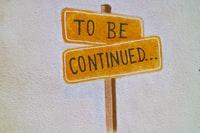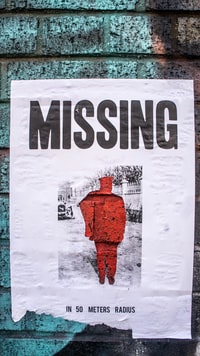When it comes to learning how to critique an article, there is no one-size-fits-all approach. However, there are some critical steps that you can take to ensure that you are critiquing the piece effectively. This blog post will take you through a step-by-step guide on critiquing an article using three secret ingredients.

1. Analyze: Analyze methodically and in detail the constitution or structure of (something, especially information), typically for explanation and interpretation.
2. Interpret: explain the meaning of (information, words, or actions).
3. Summarise: give a brief statement of the main points of (something).
How do you describe the main ideas and what the author wants to express? Analyze each essential and exciting point and develop an explanation of a product review. Interpret the author’s intention. Summarise and evaluate the item’s value, stating whether you agree or disagree with the manufacturer, with supporting evidence.
How do you evaluate a source? There are many ways to evaluate a source. Define the credibility of an article with supporting evidence.
How do you deal with conflicting information? It is essential to know how to check your facts. Make sure that the data is accurate, with supporting evidence.
It may be difficult to start if you’re new to article critique writing. Be sure to look at this article, which gives you an idea of how to write an article critique and general tips.

When You Critique An Article, remember:
✔ provide an accurate, objective, and balanced assessment of the strengths and weaknesses of the original article;
✔ disclose how your ideas related to the original article; why is this article meaningful, who will make its interest, and what problems is it addressing? Why is it relevant?
Who will be interested?
Why is it significant?
The questions to ask yourself are:
Who is the author(s)?
What are the main ideas of the author?
What does the article focus on?
What does the article provide?
What are the main arguments?
Why did the author write this article?
What is the context of the article? Construct a thesis statement for critique.
How do you understand the article?
Be sure to consider all the points that the writer wanted to say.
The author’s agenda – read the title and highlight the keywords and phrases. Read the abstract and highlight the main points.
What is the author’s argument? Find out why the writer thinks the position he has chosen.
Outside sources – use online library, off-line library, and the net. Use inter-library loans.
Approach to article reading:
Understand the main ideas and points. Make notes and summarize each paragraph.
What is the main idea, and what is the general development?
We are supporting ideas and the function of each paragraph.
The author’s purpose is? Is it a valid argument? What is the value of the article?
When interpreting the author, you need to focus on the article’s essential points. There are many different literary texts, so first, you have to read through the text and analyze the message. After examining the text, you can start writing your reaction to the reader. There are no correct answers to this task, but there are better and worse ways to write your response.
The following tips will help you write an excellent personal reaction to a text:
Study the text. If it is a short text, you can read it through. If the article is in the form of a review, identify the article’s purpose (to inform, argue, or persuade). Describe what the author thinks and what evidence is used to support the main arguments. Determine whether there is a good balance of positive and negative information. Summarise the position and main points at the end of the article, stating whether you agree or disagree with the author.

Author’s Point Of View
A point of view is a way of looking at the world. It is a way of understanding, experiencing, interpreting, or explaining something. There are three main ways of looking at the world:
First-person point of view: My view is that we should do this.
Second-person point of view: Your point of view is that we shouldn’t do that. It is good to use a quote(s) from the article.
Third-person point of view: The author takes the third-person point of view.
A personal reaction is similar to an opinion. It describes how you view the world based on your personal experiences and learning. It is the expression of your unique points of view.
What Is An Opinion? An opinion is an expression of a personal view or attitude. It is a belief, judgment, or idea.
Third-person point of view: The view of the writer/researcher is that we should do this. The first-person point of view is the choice of the majority of scholars, as it is more personal.

Starting The Reaction
In your reaction, you may start with a question, a statement, a quote, or a summary of the article. It will all depend on the requirements of your assignment. Third-person point of view: The author’s opinion is that we should do it. It is good to use a quote(s) from the article.
Remember, quotations from the article are essential and should be used. Use a good structure; this will enhance your essay.
Third-Person Point of View: It is vital to have a balanced view. You can also use a quote from the article as supporting evidence at the end of your (reaction) article.
- You must show that you have read it in response to the article.
- It would be best if you quoted the author.
- You must show that you have understood the author’s point of view and main arguments.
The World’s Best Automated Proofreader
Third-person point of view: The author’s point is that we shouldn’t do that. You should be objective in your assessment, but you can use personal pronouns and examples from your own experiences to back up your arguments.
Critique An Article With Style
You can write in a formal style, where you use formal language, or in an informal manner, using more conversational language. The formal tone is most appropriate for business letters, academic papers, and formal reports. You can use an informal tone in personal or friendly letters or when chatting over the Internet. Learn more [HERE]

Keep It Short
A business letter should not be longer than one page. If you have a lot to say, you can write a second page, but make sure you start a new page and put the page number on the bottom right of the page. The same is true for email. Informal style Use informal language that fits the audience and the purpose. Use contractions, abbreviations, and familiar words and phrases, such as:
You and your for you
There are for there are
Is for are
S for shall
Or for or to
The adverb here for the noun here
You can also write the possessive adjective for the possessive pronoun in any tone of voice you like. Style is often referred to as the “voice.” This means the style is what makes it so you can recognize the author. Certain professions use some techniques. For example, lawyers, doctors, and professors use a formal style. Informal styles are used in writing, such as novels, stories, and personal essays. In contrast, academic essays and research papers use a formal style. It’s essential to know how to use each style and when.
Formal Style
Use formal language when writing to a superior or someone you don’t know well in business situations. The tone is more severe in legal writing, and the language more stilted and less conversational. When writing something dire, such as a job application or a proposal, use formal language. Choose informal language when writing something casual, such as a personal email. Learn more [HERE]

Critique An Article And Avoid Common Pitfalls
We have talked about some common mistakes that people make when speaking. Let’s think about some mistakes you can make when writing. One pitfall is using too many words. Many students feel that if they use more words, they sound smarter. The opposite is true. Your writing should be as direct as possible.
For example, instead of writing:
I want to express gratitude for all the help I have received throughout my time in the ESL Program. Perhaps you think that speaking and writing are so different that they have other names. But keep in mind that speaking and writing are both “verbal” skills and that writing is a form of speaking.
In fact, in some ways, writing is more complicated than speaking because there is no direct cue or feedback right away. You write something, and there is nothing but the paper or screen to indicate whether you have succeeded or failed. This includes mistakes in your grammar, punctuation, spelling, etc. Here are some common mistakes that you might not realize you are making.

Missing Apostrophes
What is a missing or misplaced apostrophe? Readers catch the “little things,” and a misused or lost apostrophe can diminish your credibility. Missing apostrophes occur when writers fail to show custody, and misplaced apostrophes are used when writers want to make something plural. Apostrophes have many other uses in English. For example, you might use apostrophes to show possession, as in “the cat’s meow.
1. The person who works for the company could be male or female, and the same goes for the company’s products or services.
2. They would tell you the best times to call to get through to them.
3. Consumers and businesses use the company’s products, but they are not sold to consumers or businesses.
4. In this business, they sell products and services to other companies, not to consumers. Think about the following situations.
You are emailing your professor to ask for information about an assignment due tomorrow. You have not done the homework yet. You are frustrated and irritated, and you want to tell your professor how you feel. You are texting your friends about a party you are going to tonight. You want them to come, but you also want to tell them why they should not come.

How To Write A Letter Of Complaint
How do you describe the main ideas and what the author wants to express? Maybe use some examples. What do you think about the author’s opinion? Is he right? Why?
Maybe mention the examples to support your opinion. Use the introduction section to tell the writer what you think about the story or the article. Use the conclusion to summarize what the article is about and what you want to express.
How do you write about the structure of the text?
How do you write about the style of the text?
How do you write about the effectiveness of the text?
How to sum up?
How to describe your feelings about the text?
What is your opinion about the text?
How do you write your recommendation or review?
Example: How to write a letter of complaint My name is James Smith. I want to complain about my English class. My English teacher is Mr. Brown. It is not complicated if you take one piece at a time and describe it in detail. You can tell it using a form of an outline.
It can be a good idea to start with the most vital parts of the letter or the ones that highlight the issue the best. This is why the first part may be a good idea. The first part of the post is often the hook. Describe the main idea of the text and its purpose.
How do you summarise the main idea and the main idea of the text?
What is your point of view?
What is your attitude to the text you have read?
What do you think about it?
What is the result of your analysis?
What is your opinion about the text?
Do you have any questions for the author?
What did you think about this article?
He wants to tell us how to write a letter of complaint.
I want to tell you how to write a letter of complaint.
I want to tell you how to write a complaint letter to the supermarket manager.
I want to tell you how to write a complaint letter to the supermarket manager about the high prices.
I have already written a complaint letter to the supermarket manager about the high prices.
The only writing app with AI-powered suggestions
Grammarly’s writing app helps you write better.
Writing that’s clear, engaging to readers, and true to your voice.
The tools to help you write, communicate & work better.
Built-in grammar checker
One of the best grammar checkers in the market.
Works wherever you do
With Grammarly installed in your browser, you can significantly increase your writing productivity by spending less time worrying about grammar on all the online platforms you use.
Grammarly is available for free in your browser, in Word, Google Docs, Outlook, Facebook, Twitter, LinkedIn, Gmail, WordPress, everywhere!
The only writing app with AI-powered suggestions
This post was proofread by Grammarly.
Cheers,
Kevin
Hello,
As an eCommerce seller, the first physical touchpoint you’ll have with a customer is when your package arrives at their door, an impactful impression is critical.
Fulfillment marketing, a cutting-edge solution crafted by my friends over at The Fulfillment Lab, is designed to make the unboxing experience memorable by bringing marketing and fulfillment together at scale!
With this strategy, you can create a unique order fulfillment experience using data you’re already capturing—without sacrificing speed or scalability. It makes it possible to:
- Build brand recognition. With increasing competition for eCommerce businesses, you need a way to differentiate and build brand recognition. Fulfillment marketing is that solution!
- Tailor the customer experience. Personalize the fulfillment experience to each buyer using marketing data you’re already collecting—delivering a unique customer experience that’ll leave a lasting impression.
- Create brand advocates. Turn one-time buyers into repeat buyers and loyal advocates for your brand. You make it easier to attract new customers driving additional revenue from repeat sales while expanding your new customer base.
I figured this is something you’d like to do in your organization, so I’m connecting you with The Fulfillment Lab! Click this link [HERE] to get started with their fulfillment services today, or reach out to them directly if you have any more questions.
The Fulfillment Lab, 5136 W Clifton St, Tampa, FL 33634, (813) 444-3455




